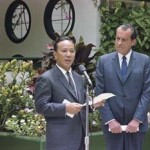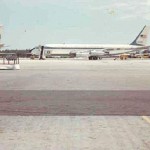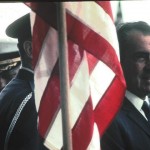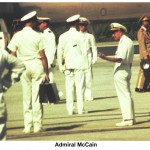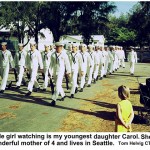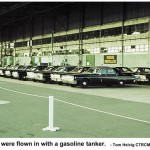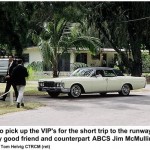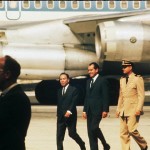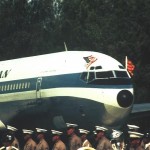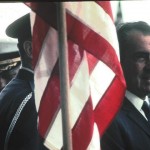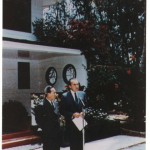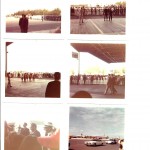June 8, 1969 – President Nixon and South Vietnam President Thieu conduct secret meetings at Midway, in The Midway House (the Officer-in-Charge House, property number 414). Nixon announced that 25,000 U.S. troops would be withdrawn by the end of August. The two parties emphasized that South Vietnamese forces would replace U.S. forces. Along with this announcement of the first U.S. troop withdrawal, Nixon discussed what would become known as “Vietnamization.” Under this new policy, Nixon intended to initiate steps to increase the combat capability of the Republic of Vietnam Armed Forces so that the South Vietnamese would eventually be able to assume full responsibility for the war.
Additional information about President Nixon’s visit to Midway;
Purpose of the Meeting: The primary purpose of Nixon’s visit to Midway was to meet with the South Vietnamese President Nguyen Van Thieu. It was a way to discuss the U.S. commitment to South Vietnam and strategies moving forward, especially considering Nixon’s intentions to change the course of the war.
Vietnamization: At Midway, Nixon introduced the policy of “Vietnamization”. The essential idea behind this policy was to gradually hand over the fighting to South Vietnamese forces, allowing U.S. troops to withdraw from the conflict. Nixon believed that the South Vietnamese could and should take more responsibility for their own defense.
Troop Reductions: After the meeting, Nixon announced the withdrawal of 25,000 U.S. troops from Vietnam, signaling the beginning of a gradual reduction in U.S. military involvement in the region.
Location: The choice of Midway Island for the meeting was symbolic. Located about halfway between Asia and North America, Midway represented a neutral and remote location, away from the distractions and pressures of either Washington D.C. or Saigon.
Historical Context: In 1969, the Vietnam War was highly unpopular in the United States. Protests and demonstrations calling for an end to the war were commonplace. Nixon’s election in 1968 was partly due to his promise to bring “peace with honor” to Vietnam. The meeting at Midway and the subsequent announcement of troop withdrawals were part of Nixon’s strategy to fulfill that promise.
Outcome and Legacy: While the policy of Vietnamization and troop withdrawals were initiated after the Midway meeting, the war would continue for several more years. However, U.S. involvement did decrease over time. By 1973, the U.S. had withdrawn most of its combat troops, and in 1975, Saigon fell to North Vietnamese forces, marking the end of the Vietnam War.
The meeting at Midway Island, though a brief moment in Nixon’s presidency, signaled a shift in U.S. strategy in Vietnam and was a step towards the eventual end of American military involvement in the region.
